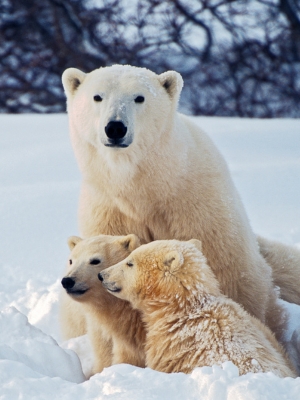A new movie Gigi & Nate just came out in theaters around the United States. But, please refrain from rushing to the box office and grabbing that popcorn. There are problems.
The movie tells the true story of an 18-year-old named Nate, who becomes quadriplegic after contracting meningitis from swimming in a lake. Several years after the incident, Nate acquires Gigi, a capuchin monkey “service animal,” to assist him with everyday tasks including operating his cell phone, going grocery shopping, riding the bus, and performing physical therapy exercises.
Once images of Nate with Gigi at a rowdy college party go viral on social media (with some photos showing both of them consuming alcohol), animal rights groups are hastily painted as the antagonist when they object to Gigi’s captivity and attempt to make the possession of primates as service animals illegal in Nate’s home state of Tennessee.
The film uses a combination of both an animated monkey and a real capuchin “actor” named Allie to portray Gigi.
The Film Portrays Captive Primate Ownership as Positive and Largely Risk-Free
In the movie trailer, despite a couple of seemingly harmless aggressive outbursts, Gigi is mostly portrayed as a tame and agreeable supporting character who develops a close emotional bond with Nate by gently and intuitively assisting him through his struggles with quadriplegia. Meanwhile, the animal rights groups and police officers that object to Gigi’s captivity are vilified as Nate eventually fights against them in court to maintain his legal ownership of Gigi.
Importantly, scenes that convey moments of compassion and empathy towards Nate were largely filmed using the animated version of Gigi, while Allie, the real-life “actor” capuchin, appears in scenes that communicate aggression and frustration. This subtle pattern has two important implications. First, using Allie in scenes of aggression and stress likely translates to Allie truly experiencing a great deal of stress during the film’s exploitation of her in the role of Gigi. It also suggests that in order to tell the story the filmmakers want to tell – about the emotional connection between Nate and Gigi – the scenes of closeness between human and wild animal had to be fabricated using animation. That kind of bond does not come naturally and it was not something they likely felt Allie could portray, even by force or training.
Similarly, press releases for the movie show images of Charlie Row, the actor that plays Nate, sitting with a capuchin named Pablo, who wears a chain leash around his abdomen while the actor poses for pictures with him as a photo prop.
All of this adds up to inaccurate and dangerous portrayal of captive primate ownership, which characterizes such captivity a positive, safe, and emotionally fulfilling for the monkey.
Primates Do Not Make Good Service Animals
While the difficulties of living with quadriplegia cannot be overlooked, living with a wild animal would only enhance these difficulties by actively endangering an already vulnerable individual. Although it is possible to train wild animals to perform complex tasks, and primates would appear to be seemingly perfect candidates for tasks that require the use of opposable thumbs and quick-witted problem solving, wild animals like monkeys are dangerous, unpredictable, and naturally aggressive. These are all traits that a service animal should never possess. Service animals fulfill roles in which humans rely on them to be consistent and safe, especially in public environments. Consequently, the Americans with Disabilities Act does not recognize monkeys as service animals.
The Born Free USA Exotic Incident Database chronicles several dangerous incidents involving primate “service animals,” including bites, escapes, and potentially deadly disease exposures. In a 2016 interview about Helping Hands, a Massachusetts-based organization that trains capuchins to assist people with disabilities, Dr. Katherine MacKinnon, an anthropologist and capuchin expert at Saint Louis University, stated, “We shouldn’t be fooled by the fact that the people and the monkeys may seem to get along… In human-capuchin interactions, often social signals are misinterpreted (on both sides, human and capuchin), which can and has resulted in unfortunate scenarios where the monkeys perceive a threat or dominance challenge from another family member, friend, neighbor, pet… and they respond by biting, and feeling threatened, anxious, [or] scared.”
Dangerous wild animals cannot be service animals; it is against their nature and it is irresponsible to allow it.
Monkeys Are Not Domesticated Animals
Primates do not have the several thousand years of shared co-evolutionary history that domesticated dogs share with humans. Therefore, the very traits primates adapted from living in their natural wild environments that enable them to survive are the very same traits that captivity tragically and inevitably suppresses, including high activity and mobility levels, richly varied social affinities, aggressive defense of family and territory, and avoidance of threats. When these engrained behaviors are restricted in captivity, primates experience stress, fear, and anxiety at a chronic level, which often results in unpredictable and dangerous behavioral responses.
Any primate, especially a highly stressed primate, poses a threat to public safety and, if used as a service animal, would be dangerous to the individual they “assist.” Dangerous wild animals cannot be service animals; it is against their nature and it is irresponsible to allow it. And, it is irresponsible to normalize this kind of dangerous animal exploitation as largely positive and risk-free, as the film Gigi & Nate does.
Please join us in advocating against keeping primates captive as “service animals” for the preservation of both human and non-human primate welfare by choosing not to support Gigi & Nate in theaters.
Keep Wildlife in the Wild,
Devan

 Dear Reader,
Dear Reader,